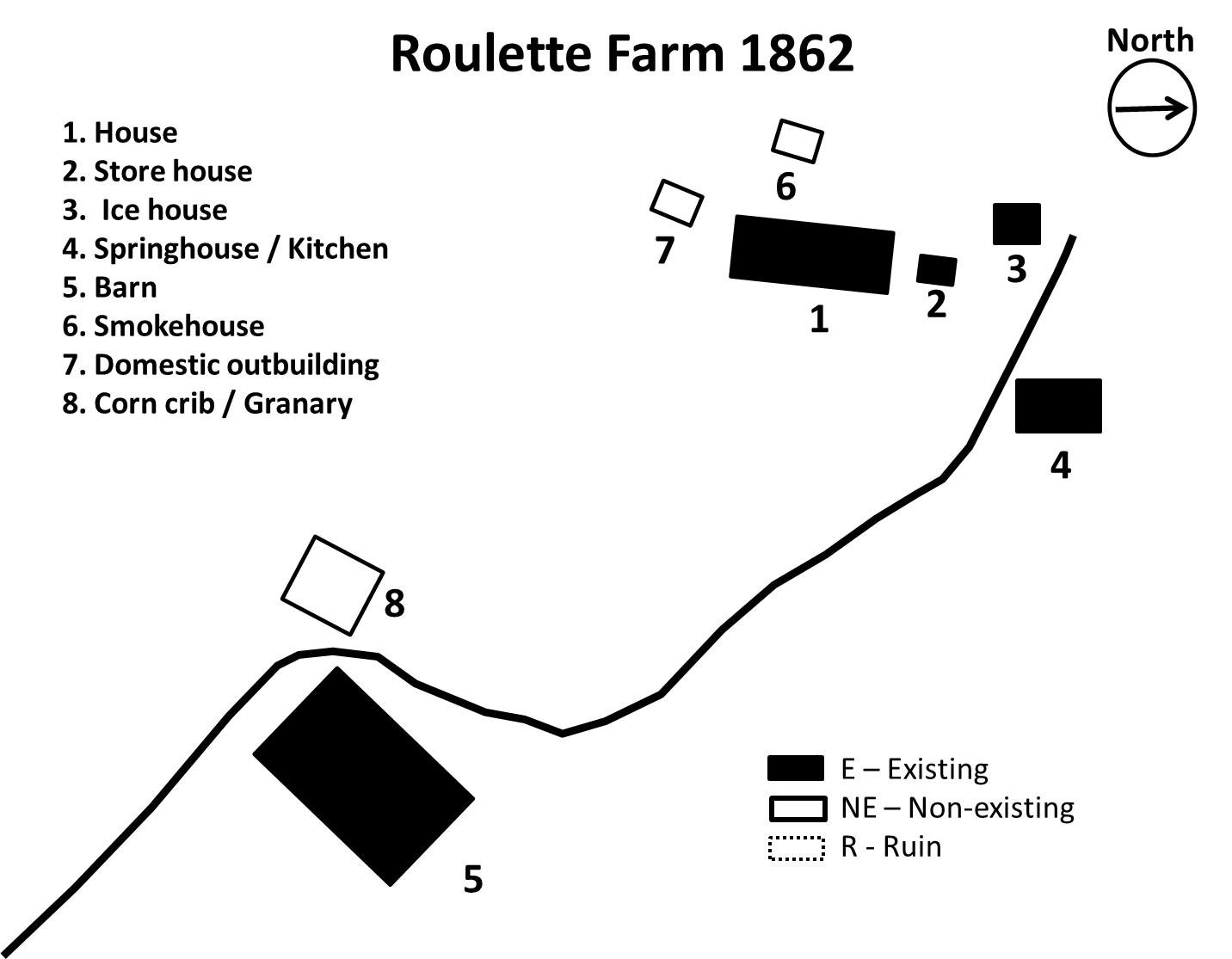Roulette Farm Antietam
19 or 20, 1862, two or three days after the Battle of Antietam, Alexander Gardner set up his bulky camera equipment in a field on William Roulette's farm to shoot a stereoview of the farmer's house. One mile northwest of Sharpsburg, Md., the Roulette farm rests in a hollow near Antietam Creek. In the middle of the 19th century, William Roulette was considered one of the most prosperous farmers. Antietam - II Corps Attacks, The Sunken Road. September 17, 1862 Daniel Harvey Hill's division had already intervened in the fluid battles near the East Woods, so even though it held a strong position in a sunken road, the division was somewhat weakened. The two remaining divisions of Sumner's.
The Roulette Farm, Antietam National Battlefield The below article was published in Civil War Times magazine back in 2010 as an installment of my In Harm’s Way/Collateral Damage column. Since the 152nd anniversary of the battle just passed, here’s the article as submitted (some changes were made to the final product.). Miller’s heretofore nondescript 24-acre cornfield, a half-mile north of Sharpsburg, was one of the worst killing fields in the long bitter day of death and destruction. In many ways, the morning fighting among the carefully cultivated cornstalks epitomizes Antietam as a whole. Disjointed and unsupported attacks.
BATTLEFIELD BACKSTORY: The house on the hill and the outbuildings are part of a pastoral scene today, but on Sept. 17, 1862, the William Roulette farm was a place of terror and heartache. George Crosby, a 19-year-old lieutenant in the 14th Connecticut, was among the wounded carried to the Roulette spring house (far right) for surgery after he was shot through the side in fighting in a field near the soon-to-be-infamous Bloody Lane. He died 37 days later at the home of his parents in Middle Haddam, Conn. Roulette's farmhouse also was used as a makeshift field hospital. After the battle, the rug in Roulette's parlor was so blood-soaked that it had to be carried to Antietam Creek to be washed. Years ago, I used to visit in Sharpsburg with Earl Roulette, one of William Roulette's great-grandsons. The stories that man could tell ... (

 Click at upper right to enlarge and click here for all posts on this blog.)
Click at upper right to enlarge and click here for all posts on this blog.)Roulette Farm Antietam
At the time of the Battle of Antietam, the farm was home to William and Margaret Roulette and their five children. The Roulettes did not own slaves, but did employ Nancy Camel, a former slave, as a domestic servant and a 15-year-old African American man named Robert Simon also resided on the property, working as a farm hand.
During the battle, thousands of Union soldiers from Gen. William H. French's division moved across the Roulette farm and even through the buildings on their way to the fighting along the Sunken Road. Damage to the Roulette house, property and crops was extensive. A shell even knocked over their beehive, causing temporary chaos among the inexperienced troops of the 130th Pennsylvania Infantry.
In the aftermath of battle, the Roulette barn was used as a field hospital for many of the Union wounded during the Sunken Road fighting and 700 soldiers were buried in mass graves in his fields. One eyewitness, Chaplain Henry S. Stevens of the 14th Connecticut Infantry, wrote of the damage to the house: 'Bullets pierced it on the day of battle, and one huge shell tore through the west side, a little above the floor, and going through the parlor in an upward course passed through the ceiling and a wall beyond and fell harmless amid a heap of rubbish it had created, where we saw it many times that day. During the battle the rooms were stripped of their furnishings and the floors were covered with the blood and dirt and litter of a field hospital...'
Despite filing claims with the federal government for damages to his property totaling more than $3,500, William Roulette received no compensation for his home and outbuildings, though he did received a payment of $371 for a hospital claim.
Roulette Farmstead Cultural Landscape